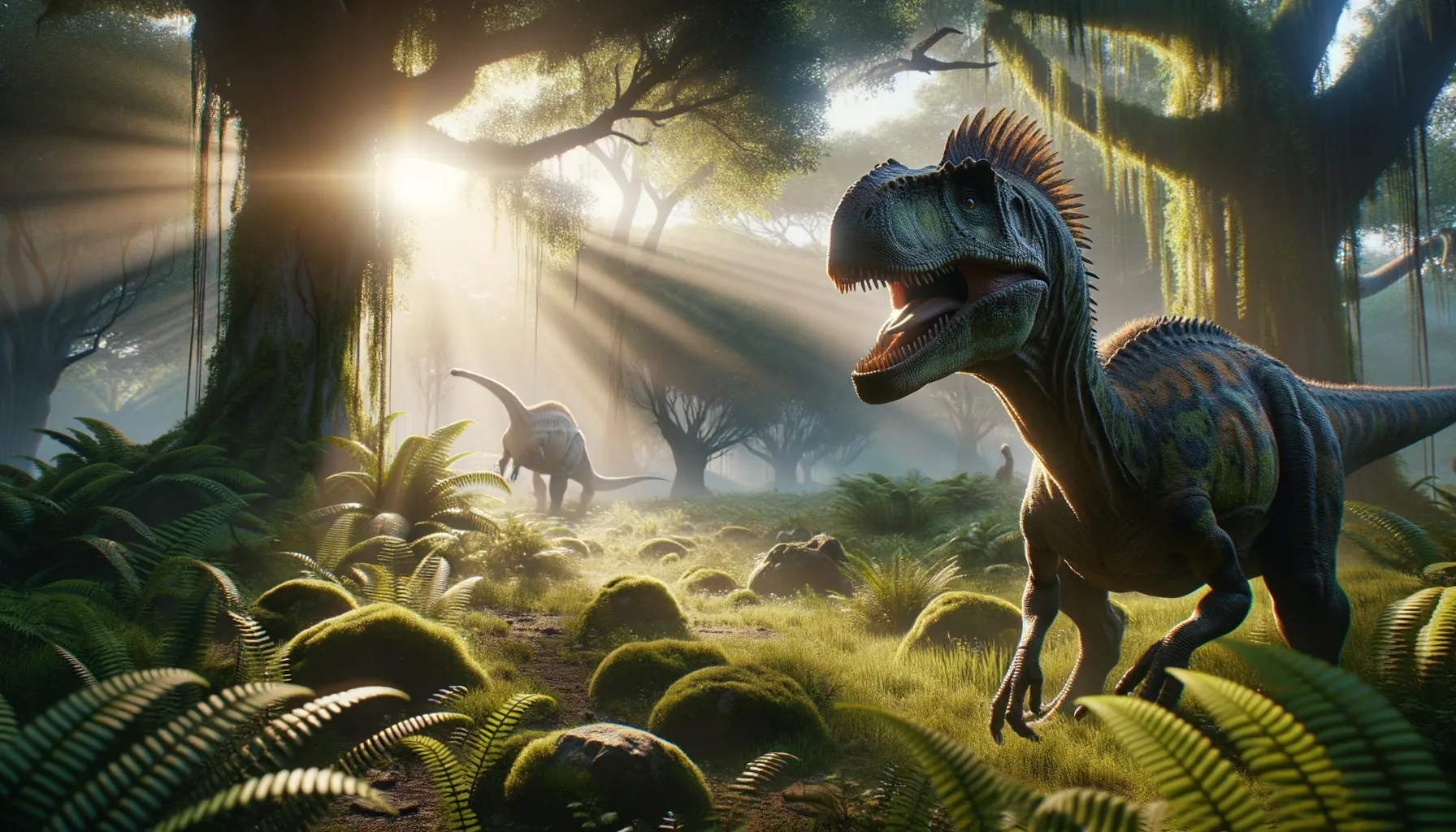
Convolosaurus
Agile marvel of the Cretaceous era.
Period
triassic
Length
About 2 meters long.
Height
Around 1 meter tall.
Weight
Approximately 40 kilograms.
Convolosaurus was a small, agile dinosaur known for its impressive ability to navigate its environment. Unearthed in Texas, this creature lived during the Cretaceous period and showcased features suited for a plant-based diet. It provides exciting insights into the diverse world of dinosaurs. Convolosaurus was particularly notable for its locomotion abilities, allowing it to thrive across varying terrain.
Diet
Convolosaurus was herbivorous, specializing in a diet of low-lying plants and shrubs. Its teeth were likely adapted to grinding plant material efficiently.
Hunting
Being herbivorous, Convolosaurus did not hunt for prey. Instead, it foraged for food, utilizing its keen sense of smell to locate plant matter.
Environmental challenges
Convolosaurus faced challenges such as competition for food with other herbivores and changing climate conditions. These shifts required adaptability in their dietary habits and migration patterns. Predation by carnivorous dinosaurs also posed a threat, necessitating speed and group living for safety.
Speed
Moderate; well-suited for running in its habitat.
Lifespan
Around 10 to 20 years depending on conditions.
First discovery
Discovered in Texas in 2019.
Fun Facts
- Convolosaurus is a relatively new discovery, with its first fossils found in North America and described in 2019.
- The name 'Convolosaurus' means 'flocking lizard', highlighting its potential group behavior.
- This dinosaur lived during the Early Cretaceous period, about 130 million years ago.
- Convolosaurus was a part of the ornithopod family, which were herbivorous dinosaurs.
- Its fossils suggest that Convolosaurus might have moved in herds, providing safety in numbers.
- Although small compared to other dinosaurs, it was agile and adapted for speedy movement.
- Scientists are fascinated by Convolosaurus because it helps bridge some evolutionary gaps within ornithopods.
Growth and Development
Juvenile Convolosaurus would quickly grow to their moderate size to evade predators. Their development included growth spurts in size and strength, helping them transition from vulnerable hatchlings to more robust adults.
Habitat
Convolosaurus lived in what is now North America, amidst lush vegetation and river settings. This environment provided ample food supply and water sources, making it ideal for their plant-based diet.
Interaction with other species
Convolosaurus coexisted with various dinosaur species, including predators and fellow herbivores. It likely relied on social groups for protection against predators. The presence of similar species suggests possible competition for resources.
Natural lifespan
Convolosaurus lived up to two decades under optimal conditions.
Reproduction
Convolosaurus reproduced by laying eggs, likely in well-protected nests. Care for hatchlings might have included group protection and teaching foraging skills.
Social behaviour
Convolosaurus likely lived in herds, as social behavior could provide safety in numbers. Communication among group members would have been vital for coordination and alertness to threats.
Fossil locations
The primary fossil sites for Convolosaurus are in Texas, United States. These discoveries help paleontologists understand its distribution and potential range during the Cretaceous period.
